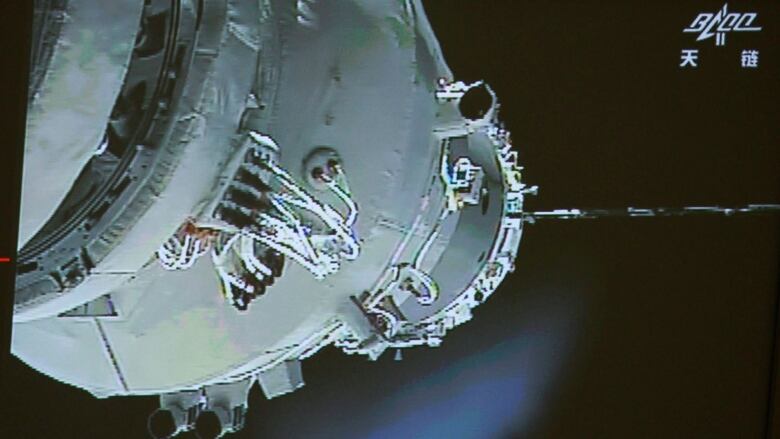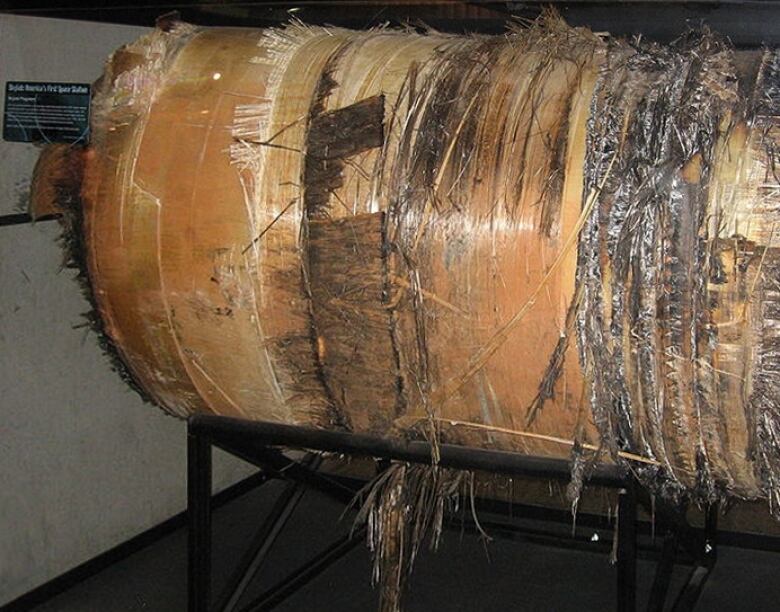Chinese space station, or pieces of it, will fall to Earth in March somewhere
Tiangong-1 received only 2 manned missions, and now most of it will burn up on re-entry

Sometime in March, a streak of fire will cross the sky as the Chinese space station Tiangong-1 falls out of orbit.
But where it will fall, or how much of it will fall, nobody quite knows.
Recent analysis by the Aerospace Corporation in Californiaconcludes that it will fall to Earthin mid-March, give or take two weeks.
On Sept. 30, 2011, Tiangong-1 became China's first space station. There were only two manned missions to the eight-ton, 12-by 3.3-metre station.
However,in March 2016, Chinese officials announcedthey were no longer tracking the station, its orbit would begin to decay and the stationwould burnasit falls to Earth.
Due to several unknown elements such as Tiangong-1's orientation as it orbited and even the density of the Earth's atmosphere in a particular location it's difficult to say precisely where or when it will fall.

"Based on Tiangong-1's inclination ...we can confidently say that this object will re-enter somewhere between 43 degreesnorth and43 degreessouth latitudes," the Aerospace Company recently said on its website.
"The date, time and geographic footprint of the re-entry can only be predicted with large uncertainties,"Holger Krag, head of European Space Agency's Space Debris Office, said in November."Even shortly before re-entry, only a very large time and geographical window can be estimated."
But, as Earth is mostly water, there's a good chance it will fall into an ocean, and the area in which it will fall will span a few hundred kilometres. There is almost zero probabilitythat debris will fall over Canada.
Not a first
While it may seem alarming that ametal object the size of a bus is going to fall to Earth, there is good news: in the history of space flight, no one has beenkilled byspace debris.
And it's not the first time a space station has fallen to Earth.
In 1979, the United States' first space station, Skylab, fell to Earth. The 77-ton station also had a decaying orbit, mainly because NASA had focused so hard on getting it up, it didn't come up with a plan to return it to Earth.
While in parts of the world there was concern over where it would fall, in the U.S. people actually threw "Skylab parties."
On July 11, 1979, pieces both large and small including part of an air tank landed in Australia's outback.

Though China has not confirmed it, Aerospace believes the re-entry of Tiangong-1 is uncontrolled.
In 2001, Russia's Mir space station a whopping 120 tons made a controlled re-entryinto the Pacific Ocean.
Though it's rare, sometimes a piece of rocket debris is seen burning up in the atmosphere.
Last November a fireballstreakedacross Saskatchewan and Alberta. U.S. Strategic Command confirmed it was part of an Antares rocket returning to Earth.
Thanks @Dunlap_Obs -folks did indeed witness the reentry of @OrbitalATK's #Antares rocket booster NORAD ID 2017-071B over #Saskatchewan this AM- timing+location matches Space-Track prediction. @CBCCanada article: https://t.co/HuubCyjBve @amsmeteors page: https://t.co/rCQBcf031O pic.twitter.com/LPUdMtJGGH
—@Astroguyz











_(720p).jpg)


 OFFICIAL HD MUSIC VIDEO.jpg)
.jpg)



























































































